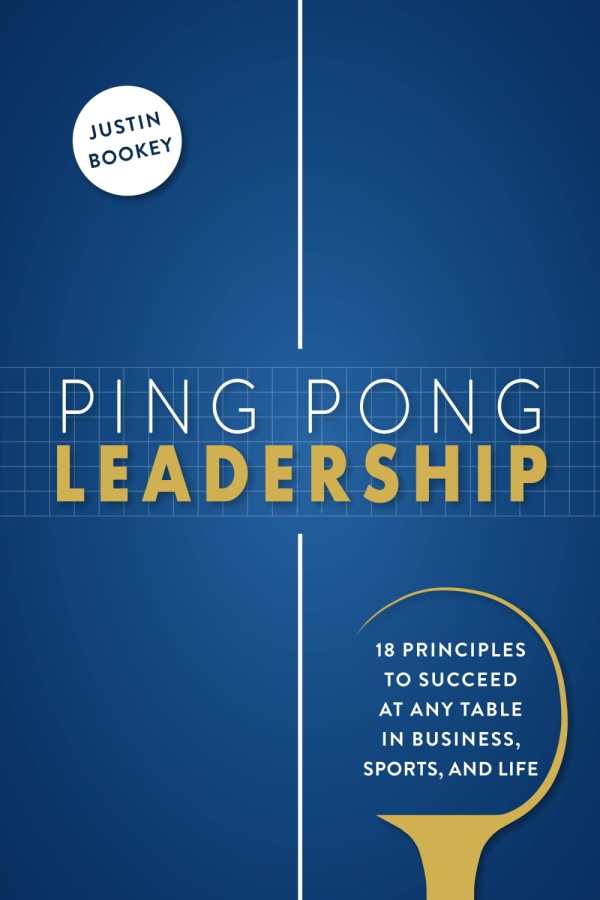Ping Pong Leadership
18 Principles to Succeed at Any Table in Business, Sports, and Life
Ping Pong Leadership is an inventive guide that proposes a unique way of understanding life and leadership challenges.
Justin Bookey’s innovative treatise on leadership delivers life lessons through the lens of table tennis.
Situated at the intersection of sports, politics, and social life, ping pong is treated as unique game that is accessible to a wide spectrum of people, including those of various ages and physical fitness levels. The book notes that the sport has been used to thaw diplomatic relations, as when the US and China began communicating in the midst of the Cold War via an amiable game of ping pong. Through analyses of the sport, including the strategic sleight of hand and improvization that defined the approaches of legendary players such as Jan-Ove Waldner and Ma Long, the book strains tools from ping pong tactics and techniques that apply to other endeavors too.
The book’s lessons are divided into three sections of six principles each. The first section targets the capacity for self-reflection and analysis, or the ability to recognize areas for personal improvement. The second catalogs obstacles—many of which stem from inner conflicts—and means of overcoming them. The third concerns techniques for improving skills that are already working. This tripartite structure represents a multitude of perspectives and approaches: rather than insisting on a singular, unimpeachable technique, the book embraces a spectrum of viewpoints and methods for achieving a desired result. And at the conclusion of each chapter, reflection questions are present for personal evaluation, as on the qualities one measures at work, how accurate they are, and why those particular metrics were chosen.
Each of the book’s eighteen “Pong Principles” are introduced in relation to the sport and then expanded through journalistic profiles of extraordinary individuals, including Nolan Bushnell and Annie Duke. But while the book’s narrative teaching style suggests practical applications for its “Pong Principles,” the text is also studded with trivia on topics including table tennis and airline regulations, diluting its sense of focus.
While the profiled individuals represent a wide swath of experiences and variety of ways to interpret the book’s “Pong Principles”—as where saxophone and rhythm guitarist Scott Page details how awareness of patterns and rhythms is an essential tool for a musician and lifelong learner—the connections drawn between table tennis lessons and real life are often tenuous. Indeed, the book’s explanations of ping pong are sometimes too generalized in relation to the profiled individuals’ activities. For instance, while improvisation and deception play a role in how tennis players interact with their opponents, the corollary connection drawn to Atari founder Nolan Bushnell’s effort to trick copycats who were making knock-off versions of Atari arcade games in the 1970s is glancing at best.
A ping pong–infused collection of sports lessons that can be applied to other spheres of life, Ping Pong Leadership is a thought-provoking self-help text.
Reviewed by
Willem Marx
Disclosure: This article is not an endorsement, but a review. The publisher of this book provided free copies of the book and paid a small fee to have their book reviewed by a professional reviewer. Foreword Reviews and Clarion Reviews make no guarantee that the publisher will receive a positive review. Foreword Magazine, Inc. is disclosing this in accordance with the Federal Trade Commission’s 16 CFR, Part 255.

